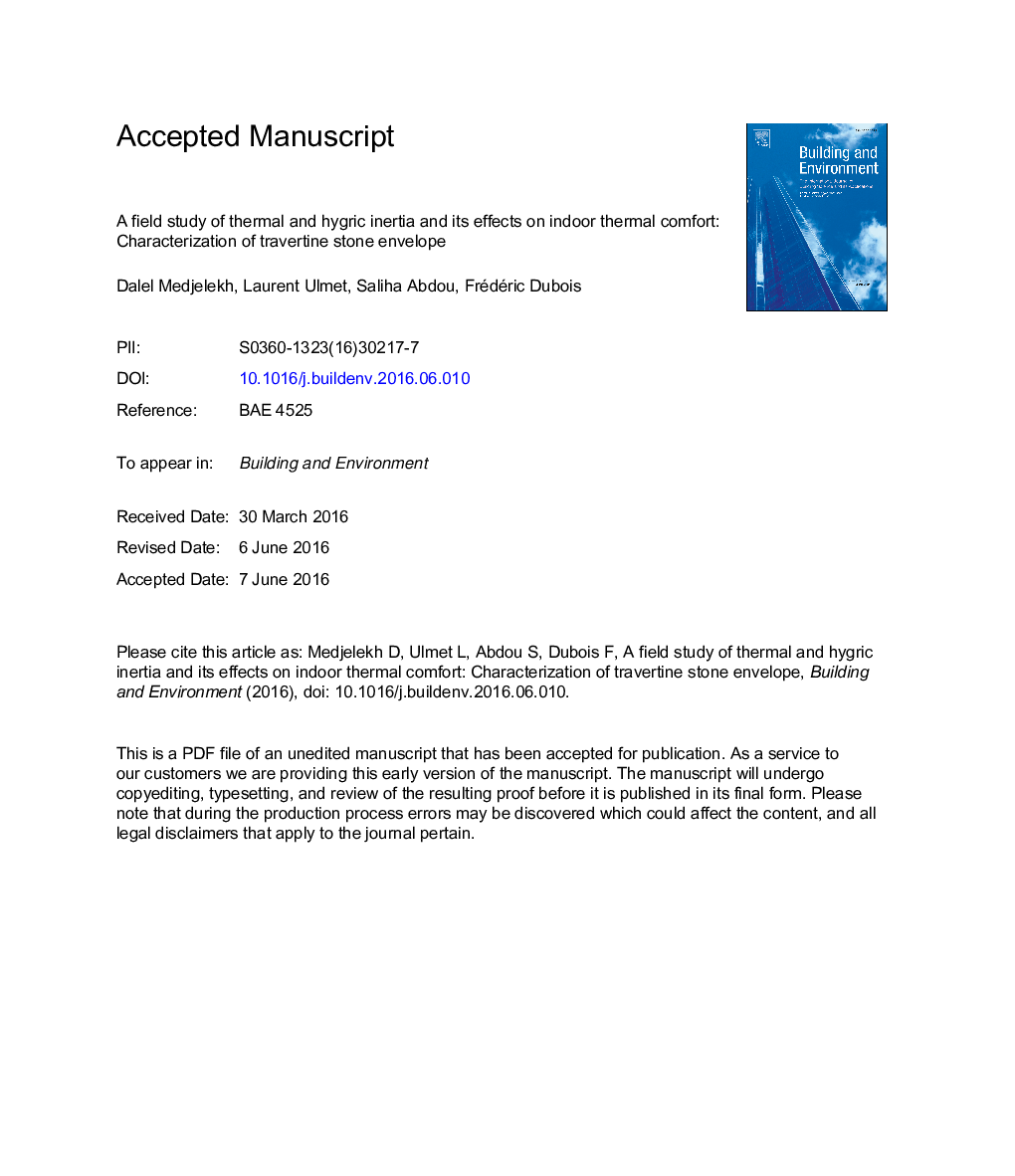| کد مقاله | کد نشریه | سال انتشار | مقاله انگلیسی | نسخه تمام متن |
|---|---|---|---|---|
| 6698744 | 502517 | 2016 | 39 صفحه PDF | دانلود رایگان |
عنوان انگلیسی مقاله ISI
A field study of thermal and hygric inertia and its effects on indoor thermal comfort: Characterization of travertine stone envelope
ترجمه فارسی عنوان
بررسی میدان حرارتی و انجیری و اثر آن بر راحتی حرارتی داخل ساختمان: مشخصات پاکت سنگ تراورتن
دانلود مقاله + سفارش ترجمه
دانلود مقاله ISI انگلیسی
رایگان برای ایرانیان
موضوعات مرتبط
مهندسی و علوم پایه
مهندسی انرژی
انرژی های تجدید پذیر، توسعه پایدار و محیط زیست
چکیده انگلیسی
Energy consumption in Algerian residential buildings is very high, especially during the summer season. The thermal inertia of the building envelope may contribute to improving the thermal comfort and even lead to replacing air conditioning systems. This passive process is typically associated with an external wall made of heavy construction counteracting the strong changes in temperature. In reality, other parameters are acting to influence this property. The present paper describes a three-year field case study devoted to monitoring an inhabited stone house, dating from the colonial era in the town of Guelma (Algeria), exposed to a hot and sub-humid climate. Results from the monitoring program indicate that the passive process called “hygric inertia”, in association with the “thermal inertia” of porous and hygroscopic local materials adapted to the regional climate, has led to improving thermal comfort and humidity regulation: a drop of more than 14.5Â K was recorded. Permeable coverings may have exerted an impact on indoor hygrothermal conditions, in generating a temperature drop of 1.5Â K, which corresponds to a 31.5% energy savings rate. Other parameters, including the construction system, are also involved in stabilizing the indoor temperature and moisture. The results of a modeling run using the TRNSYS software showed good agreement between simulated and measured air temperature readings, which validates the effect of thermal inertia. The two humidity models implemented in this software do not take moisture transfers in the wall into account. The low spreads in relative humidity measurements however have confirmed that the effect of hygric inertia on ambient temperature inside this house is not as significant as that of thermal inertia. It can be concluded that a 100% hygroscopic house does not actually exist.
ناشر
Database: Elsevier - ScienceDirect (ساینس دایرکت)
Journal: Building and Environment - Volume 106, September 2016, Pages 57-77
Journal: Building and Environment - Volume 106, September 2016, Pages 57-77
نویسندگان
Dalel Medjelekh, Laurent Ulmet, Saliha Abdou, Frédéric Dubois,
